While there are so many things one can ferment for probiotics and health, fermented beet kvass is the one I always recommend starting with. There are so many benefits! Beets on their own are a powerhouse for nutrition. However, when fermented, they take it to a whole new level. I can whip up beet kvass in a half hour or less (depending on how much I’m making; sometimes in just 15 minutes), and it can be ready to consume in as little as 10 days. Join me in our discussion on one of the best probiotic drinks: fermented beet kvass.
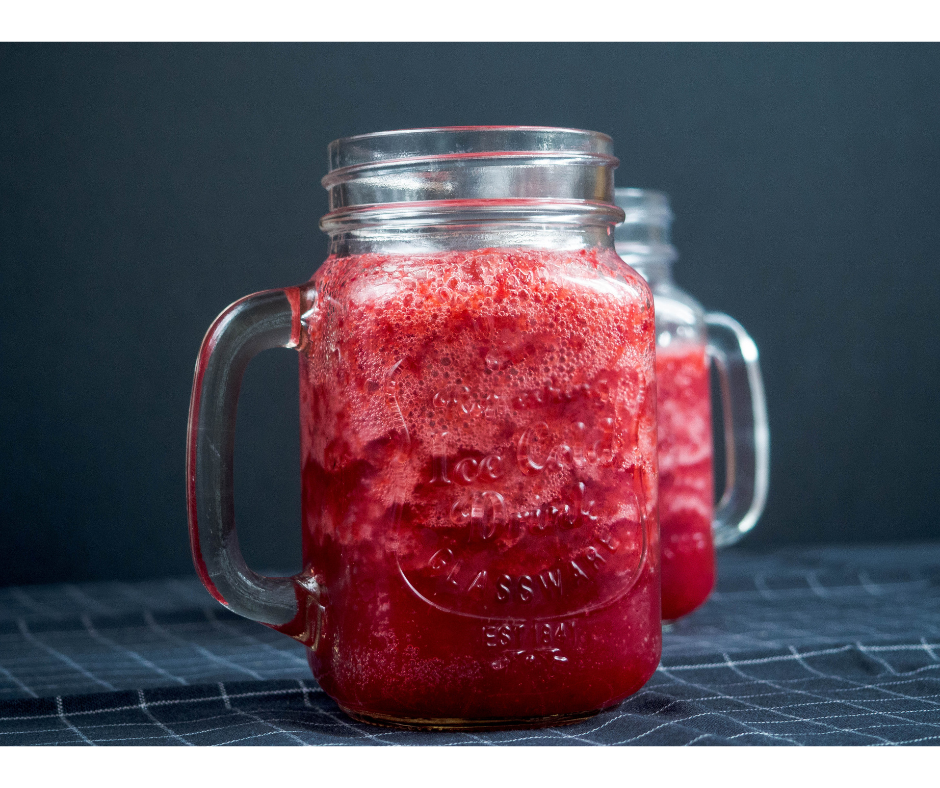
Beet Benefits
In two previous posts, I went over the vast health benefits found in conventional beetroot as well as fermented beets and fermented beetroot juice. The science being discovered about the health benefits are truly amazing! In case you haven’t read those posts, I’ll give a quick synopsis of what you can expect from beetroots.
- Decrease in Hypertension
- Decrease in Atherosclerosis
- Mitigating Type 2 Diabetes
- Increase in Cognitive function
- Decrease in Dementia
- Improved metabolic activity
- Decrease in food intolerance
- Antioxidant properties
- Radical-scavenging
- Anti‐inflammatory
- Anticancer
- Anti‐lipidaemic (helps lower cholesterol)
- Antimicrobial
- Against gram positive and negative bacteria, and biofilm-forming species
- Fungi -against yeasts Candida albicans
- Virus -including SARS-CoV-2 virus (inhibition especially seen with betacyanin)
- MRSA -beetroot especially showed signs of preventing infection from MRSA
Check out those two posts here and here for a better understanding of the how and why everyone should be making and consuming beet kvass! And now, I propose we look at how to make this amazing drink!
The Beginning: Picking Your Beets
Let’s start at the very beginning. Like any meal you might make, you have to start with good quality ingredients. Beet kvass is no different. With fermenting, you end up with a far superior product than what you started with. However, this does not mean that it will turn decaying food into something amazing. Start with good quality produce first, and your ferment will do MUCH better!
It’s best to find beets that have their tops removed for storage. While you can absolutely ferment the beet greens (separately), they will leech nutrients from the root and you will end up with a depleted beetroot. In addition, if you have the option of picking through a pile of beets, I like to find ones that don’t have large cuts or fissures in them.
Preparing Beets
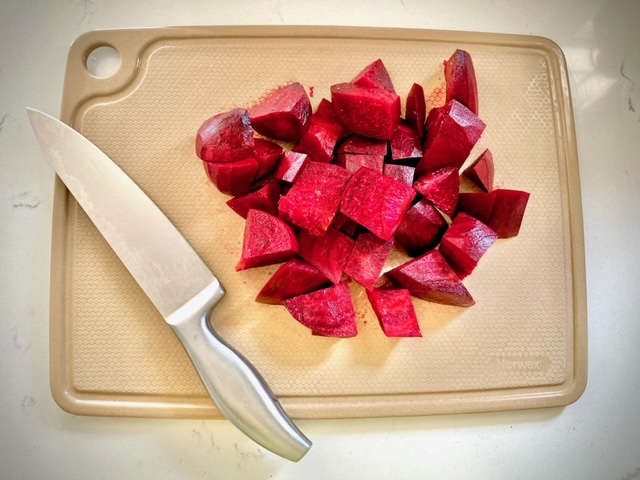
Now that you have your good quality beets, trim the tops and bottoms off (if necessary) and peel. Just using a good quality vegetable peeler will do the job. I try to not peel with a lot of force so that I don’t take too much of the flesh off with the skin. After I’ve peeled the beets, I usually like to give them a quick rinse in case there is any residue from peeling the skins. This is probably not necessary, and sometimes I forget to do this. Next, I quarter and weigh them.
You will need roughly 10.5 ounces of beets per liter jar. The goal is to have roughly 1/3rd of your jar full of beets, and then fill the jar with brine to the neck. Normally, I’m making a 3L or 4L jar at a time. So if I were making enough kvass for a 3L jar, I’d use two pounds of beets, or 32 ounces. Then I put them in the jar. At this point you can chop carrots into chunks and add to the jar if your beets are a little older and need the extra sugars.
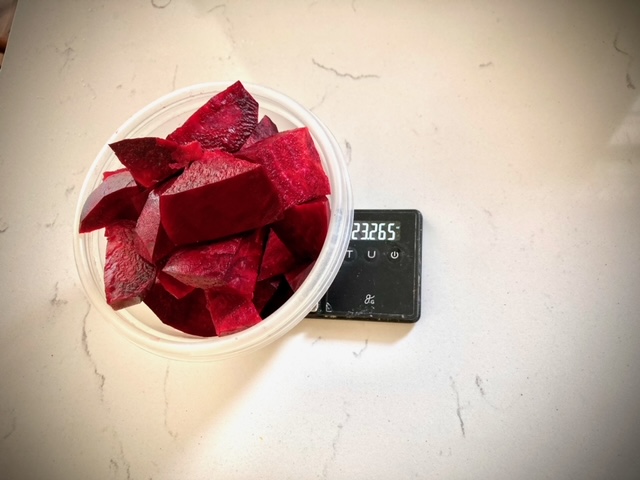
Beet Kvass Recipe
Now a little information about the actual recipe for one of the best probiotic drinks; fermented beet kvass. In addition, I have posts about each separate ingredient, method, tool, etc. linked at the bottom of this post. Make sure to check those out if you are needing more direction.
Brine

When making a fermented drink, the brine percentage will be lower than the brine percentage for whole or chopped vegetables. Drinks only require a 1% brine. This is because if we had it as a 2% brine it would turn out way too salty. Drinks have a higher brine to vegetable ratio and are generally shorter ferments. This requires less salt.
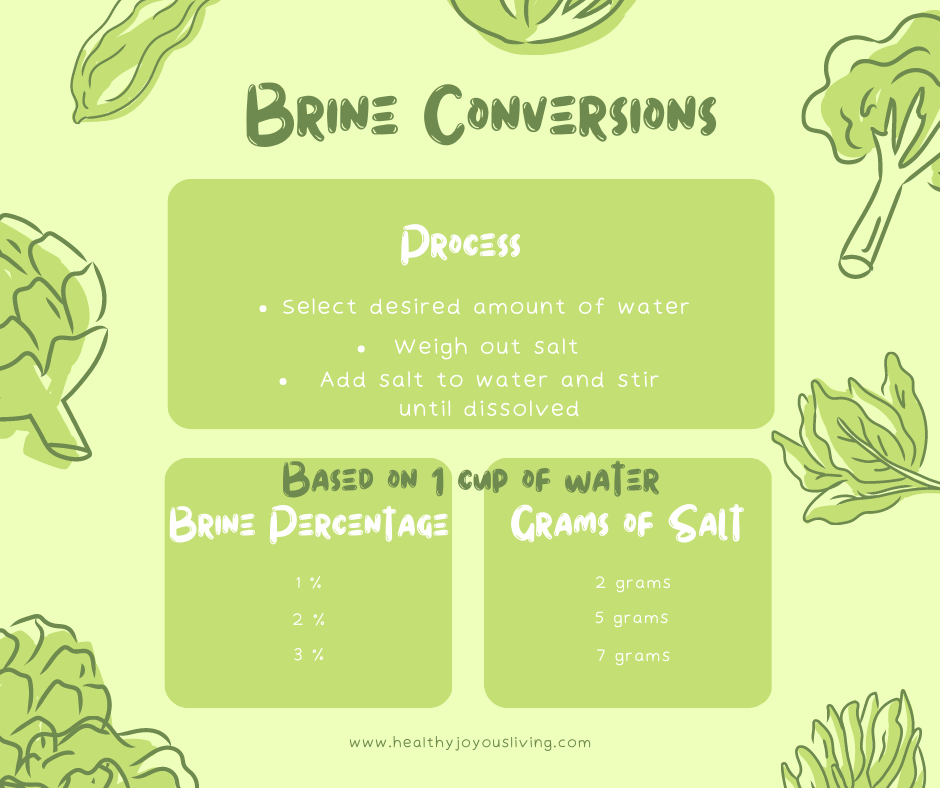
In addition, this research article was looking at volatile organic compounds (VOC) in fermented beetroot juice. VOCs are responsible for the taste and smell of food/drink. The results showed that VOCs were highest in a 1% brine.
Jar and Storage
So, I add my 1% brine to the beets (and optional carrots) in the jar. When I’m ready to put my lid on, I usually insert my airlock to the lid first. Then I fill the airlock with 1.5-2 tablespoons of water and put the lid on the jar. Place the jar in a cool, dark place. I usually store mine in a closet of some sort. In the warm summer months, if I don’t have a particularly cool area of the house, I will sometimes place ferments by an air vent to get the AC blowing through. If your house is really hot, just put it strait in the refrigerator and skip any on counter time. With fermenting, faster does not usually mean better. You’ll get better flavor development with a longer, cooler fermentation time.
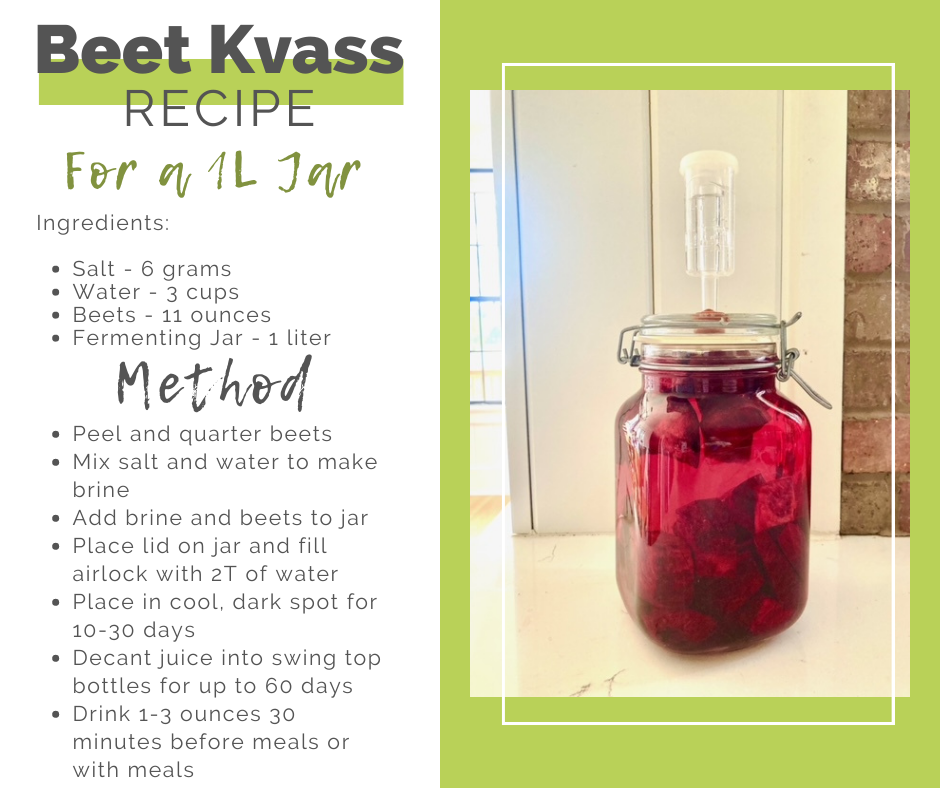
Betalain Research
Now I will take a short detour to explain the research specifically on beets and the betalains found in beets. The research looked at how betalains interact with light, heat, pH, and oxygen. They are quite sensitive to all of those things, and the LABS that create all of the other benefits found in fermented foods are also sensitive to those categories in similar ways. In any case, it’s best practice to avoid light exposure, any hot environments, and exposure to oxygen when fermentation is taking place.
Fermentation Length
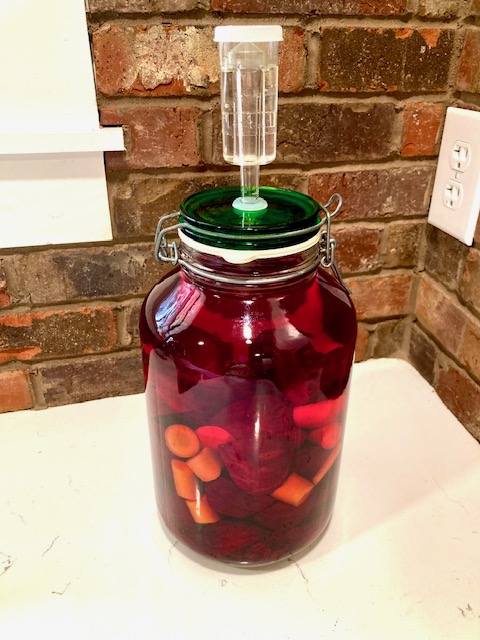
As one of the best probiotic drinks: fermented beet kvass, it has the potential to be a fairly short ferment. Beet kvass can be done in as little as 10 days! This is on the short side, however. I usually like to wait 30 days so the flavors can develop all the way. It is recommended to start tasting your kvass at day 10. This isn’t general practice for every ferment or something to have as a continuing practice. It’s just a good thing to do when you’re starting out. Tasting along the way will allow you to see what the flavor is like at various intervals. So try tasting at day 10. Then day 15. Then day 20, etc. You can go all the way to day 30 if you want. The next time you’re making kvass, just stop the ferment around the time that you liked the flavor the most.
Decanting Your Kvass
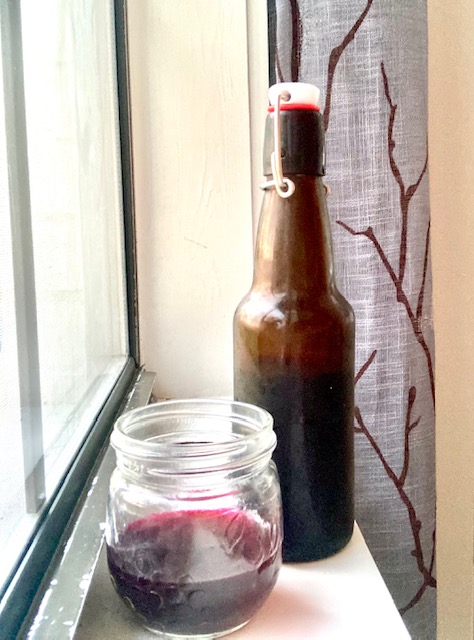
When your beet kvass has reached the flavor that you like best, it’s time to decant. Decant means to put into a smaller vessel. For beet kvass, that means throwing out the beets, and pouring the kvass into swing top bottles for storage. You can compost the beets or give them to any animals you might have. All of the nutrients have transferred from the beets into the brine, so don’t do what I did; cook them. I think I tried cooking them one time for dinner. Take my advice. Don’t do that. They are truly inedible at that point!
I have heard of people using the same beets for another batch of kvass. I would not recommend this. The chemical and biological processes that the beets have gone through would make a far inferior if not completely non-existent second ferment. If you’d like more of the science behind how fermentation works, see my other posts on fermentation science below.
Longevity
Now let’s look at how long this wonderful drink will last! Generally speaking, fermented foods do last longer than their raw or cooked counterparts. With fermented beetroot juice, this research discovered that the microbial content and benefits from the juice will remain at an optimum level for at least 30 days. The research checked the juice at days 7, 14, 30, 90 and 180. When looking at the levels for each measured item, there is a huge leap between day 30 and day 90 for nutrient decrease. If they had tested between there it is possible that half way through would still have been an acceptable amount of nutrient and microbial viability. In any case, I do know knowledgeable people who are confident using the bottled juice through day 60. I am comfortable with that as well and have not noticed a taste difference, but we generally go through our juice well before 2 months have passed.
As a side note, when discussing fermented beetroot juice longevity, I am referring to after it has been separated from the beets and put into swing-top bottles for storage in the refrigerator. If the beets are left in the brine and it’s original anaerobic fermenting jar, it has much greater longevity. I have had seasoned fermenters not open their kvass until it had sat on the counter for 30 days and another 4 months in the refrigerator. That was by far the best beet kvass I’ve ever had!
Make Your Own!
Now that you are all equipped with information on making one of the best probiotic drinks: fermented beet kvass, there’s nothing holding you back! Well, unless you need to research a bit more. But all that information is at your fingertips here at Healthy Joyous Living! Happy fermenting!
Additional Resources:
- A Brief History of Fermentation and Why This is Important
- The Science Behind Fermentation and it’s Benefits
- The Importance of Time Tested Fermenting Equipment
- The Best Fermenting Equipment To Use
- Discussion on Ferments Exposed to Oxygen
- Are Mason Jars the Best Tools for Fermentation?
- Pros And Cons Of The Mason Jar For Fermenting
- Dialogue on the Mason Jar and Oxygen Diffusion
- Important Gasses In Fermentation
- The Best Salt For Fermenting: Part 1
- The Best Salt For Fermentation: Part 2
- The Best Water For Fermentation
- Pectin Effects on the Human Body
- Fermented Pectin and it’s Benefits
- Amazing Impacts of Fermented Foods on Allergies
- Amazing Fermentation and Allergy Link
- The Exciting Gut-Brain Axis and Fermentation Connection
- What Does the Research Say About Beetroots?
- Amazing Fermented Beetroot Juice Research


Leave a Reply